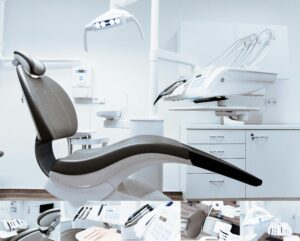Can Drinking Through a Straw Protect Your Teeth?
When it comes to maintaining dental health, most people think about regular brushing, flossing, and dental check-ups. However, there is another, often overlooked method that could play a role in protecting your teeth: drinking through a straw. But does it really help, and if so, how? Let’s explore the benefits and potential downsides of using a straw for your dental health.
How Drinking Through a Straw Might Help
Minimising Direct Contact with Teeth
One of the primary benefits of using a straw is that it can help minimise the direct contact that beverages have with your teeth. When you drink sugary or acidic beverages like sodas, juices, or energy drinks, the liquid can erode your tooth enamel over time. By using a straw, you can direct the drink past your teeth, reducing the exposure to these harmful substances.
Reducing Stains
Another advantage of using a straw is its potential to reduce staining on your teeth. Beverages like coffee, tea, and red wine are notorious for causing stains. With a straw, these drinks are less likely to make prolonged contact with the front of your teeth, which can help keep your smile brighter.
Lowering Risk of Cavities
By reducing the exposure of your teeth to sugary and acidic drinks, straws can also lower the risk of cavities. The less time these substances spend on your teeth, the less chance they have to cause decay.
The Science Behind It
Enamel Erosion
Dental erosion occurs when acids wear away the enamel, which is the protective outer layer of your teeth. This erosion can lead to increased sensitivity and cavities. The primary culprits of enamel erosion are acidic foods and drinks. Using a straw can help bypass the teeth, thus minimising enamel erosion.
Sugar and Bacteria
Sugar in drinks can feed bacteria in your mouth, leading to the production of acids that cause decay. By using a straw, you can reduce the amount of sugar that lingers on your teeth, thereby decreasing the food supply for these bacteria.
Considerations and Limitations
While using a straw can be beneficial, it’s not a cure-all for dental health issues. Here are some considerations to keep in mind:
Type of Straw Matters
Not all straws are created equal. Plastic straws have come under scrutiny for environmental reasons, leading to the rise of alternatives like metal, silicone, and paper straws. Reusable options can be just as effective for dental health while being more eco-friendly.
Proper Usage
For maximum benefit, the straw should be positioned towards the back of the mouth to effectively bypass the teeth. However, this might not always be practical, especially when consuming hot beverages.
Not a Substitute for Good Oral Hygiene
Using a straw is a supplementary measure. It should not replace regular brushing, flossing, and dental visits. These practices remain the cornerstone of good oral hygiene.
Real-Life Scenarios: When to Use a Straw
Cold and Sugary Drinks
Straws are particularly useful for cold and sugary drinks. These beverages often pose a double threat of enamel erosion and cavities due to their temperature and sugar content.
When Whitening is a Priority
If you’re undergoing teeth whitening treatments, using a straw can help maintain your results by minimising contact with stain-causing beverages.
For Sensitive Teeth
For those with sensitive teeth, using a straw can help reduce discomfort when drinking cold or acidic beverages by directing the liquid away from sensitive areas.
Alternative Practices for Protecting Your Teeth
In addition to using a straw, consider these practices for optimal dental health:
Drinking Water
Regularly drinking water, especially after consuming sugary or acidic drinks, can help rinse away harmful substances and maintain saliva production, which protects teeth.
Chewing Sugar-Free Gum
Chewing sugar-free gum can stimulate saliva flow, which naturally cleanses the mouth and neutralises acids.
Regular Dental Check-Ups
Routine visits to the dentist are essential for maintaining dental health. Professional cleanings and check-ups can catch issues early and keep your teeth in top condition.
The Impact of Drinking Through a Straw on Dental Health: Conclusion
Drinking through a straw can indeed offer some benefits for your dental health, particularly in reducing enamel erosion, staining, and the risk of cavities.
Ultimately, while straws can be a useful tool, they are not a substitute for the basics of dental care. Keep brushing, flossing, and visiting your dentist to ensure the best possible care for your teeth.








